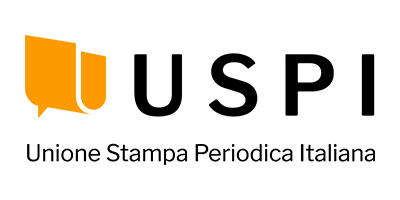Argonne’s Aurora Supercomputer Breaks Exascale Barrier
The Aurora supercomputer at the U.S. Department of Energy’s (DOE) Argonne National Laboratory has officially surpassed the exascale threshold, measuring over a quintillion calculations per second on...
LEMONT, Ill.: The Aurora supercomputer at the U.S. Department of Energy’s (DOE) Argonne National Laboratory has officially surpassed the exascale threshold, measuring over a quintillion calculations per second on the new Top500 list. The results were announced today at the ISC High Performance 2024 conference in Hamburg, Germany.
In its latest submission to the semi-annual list of the world’s most powerful supercomputers, Aurora registered 1.012 exaflops using 87% of the system’s 10,624 nodes. After making its Top500 debut in November 2023, the Argonne system retained its spot as the second fastest supercomputer and joined DOE’s Oak Ridge National Laboratory’s Frontier as the world’s second exascale machine. Aurora also earned the top spot in a measure of artificial intelligence (AI) performance, achieving 10.6 exaflops on the HPL-MxP benchmark.
“We’re thrilled to see Aurora join the exascale club,” said Michael Papka, director of the Argonne Leadership Computing Facility (ALCF), a DOE Office of Science user facility at Argonne. “I’m extremely proud of the Aurora team’s ongoing efforts to get the system up and running for the research community. We can’t wait to see what the full system will be capable of.”
As one of the world’s fastest supercomputers, Aurora gives scientists a powerful new tool for carrying out research involving simulation, AI and data analysis. The state-of-the-art system will not only enable breakthroughs in science and engineering but also spur new advances in technology and bolster the nation’s innovation infrastructure.
“Aurora is fundamentally transforming how we do science for our country,” Argonne Laboratory Director Paul Kearns said. “It will accelerate scientific discovery by combining high performance computing and AI to fight climate change, develop life-saving medical treatments, create new materials, understand the universe and so much more.”
“Aurora excels at tackling both traditional scientific computing problems and AI-powered research,” added Rick Stevens, Argonne’s associate lab director for Computing, Environment and Life Sciences. “As AI continues to reshape the scientific landscape, Aurora gives us a platform to develop new tools and approaches that will significantly accelerate the pace of research.”
Built by Intel and Hewlett Packard Enterprise (HPE), Aurora’s first-of-its-kind architecture includes new technologies being deployed at an unprecedented scale. The supercomputer’s 63,744 graphics processing units (GPUs) make it the world’s largest GPU-powered system yet. It also has more endpoints in its interconnect technology than any other system to date.
The Aurora installation team, which includes staff from Argonne, Intel and HPE, continues to work through system validation, verification and scale-up activities. Their work has included addressing various hardware and software issues that emerge as the massive system nears full-scale operations.
Teams participating in the ALCF’s Aurora Early Science Program and DOE’s Exascale Computing Project have been preparing to run their research projects on Aurora for the past several years. The teams have demonstrated strong early performance gains while scaling and optimizing codes for the system. The initial Aurora projects include efforts to advance research in cosmology, fusion energy science, drug discovery and the design of new materials for clean energy technologies.
“Hitting exascale is a huge milestone but enabling groundbreaking science is the ultimate goal,” said Susan Coghlan, ALCF project director for Aurora. “The new performance numbers, along with some promising runs from our early science teams, give us a glimpse of what will be possible with Aurora.”
Fonte: Business Wire
Related news
Last News
Sparkle and Telsy test Quantum Key Distribution in practice
Successfully completing a Proof of Concept implementation in Athens, the two Italian companies prove that QKD can be easily implemented also in pre-existing…
Dronus gets a strategic investment by Eni Next
Eni's VC company invest in the Italian drone company to develop new solutions for industrial plants monitoring
Technology Reply wins the 2024 Oracle Partner Awards - Europe South Innovation
Oracle recognizes Technology Reply’s ability to develop and deliver pioneering solutions through partnering with Oracle
25 Italian Startups Will Be Present at Expand North Star 2024
Scheduled for October, the world's largest startup event will bring together more than 2,000 exhibitors in Dubai, UAE
Most read
Cost-cutting, GenAI Drive Contact Center Outsourcing
#CX--Enterprises worldwide continue to outsource contact center functions, in search of lower costs and new technologies, despite a decline in the annual…
Rithum Names New CMO and CFO
Today, Rithum announced two new executive appointments: Suzin Wold joins as Chief Marketing Officer (CMO), and Mike Vantusko joins as Chief Financial…
Universal Robots Expands ‘Beyond the Welding Cart’ at FABTECH 2024
#CNC--The line between traditional automation and collaborative robots continues to grey as cobots take on more advanced welding tasks. Since Universal…
Data Center Cooling Business Research Report 2024: Global Market to Surpass…
The "Data Center Cooling - Global Strategic Business Report" report has been added to ResearchAndMarkets.com's offering. The global market for Data Center…






